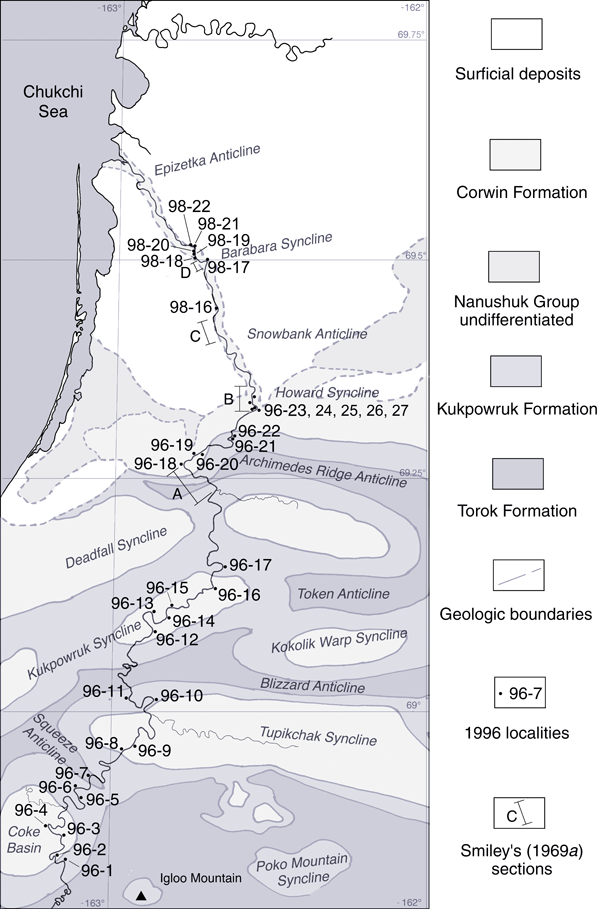Locality 96-13. 69° 05' 54" N 162° 53' 32" W
Corwin Formation
Specimens: 96 RAS 64, 65, 66, 67, 68, 69, 70, 71, 72, 73, 74, 75
Description. The base of the section is composed of carbonacous shales and poor coals dominated by Podozamites. Podozamites also occurs abundantly in ironstone concretions associated with the coals and carbonacous shales. These are overlain by gray/brown mudstones also containing abundant fragmented Podozamites together with Equisetites, Pityophyllum and probably Ginkgo fragments. Up section (down river) gray, weathering to yellow, fine sandstones become more prevalent with wood fragments and impressions of logs. The sands are ripple marked with sometimes two phases of rippling: large ripples of approximately 10 cm wavelength within the troughs of which are smaller ripples (at right angles to the larger ones) with a 1 - 2 cm wavelength. The sediments also contain horizontal "U" shaped burrows and casts of bivalves 4 - 5 cm long (inoceramids?).
Interpretation. Going up section the sedimentary environment changes from a woody, Podozamites, dominated swamp to a marginal marine setting. The two types of ripples may indicate subaerial exposure with wind (or draining) ripples formed in the flooded troughs of the larger ripples formed by water flow (tidal or longshore currents?).
|
|

